Data - Fuel for AI
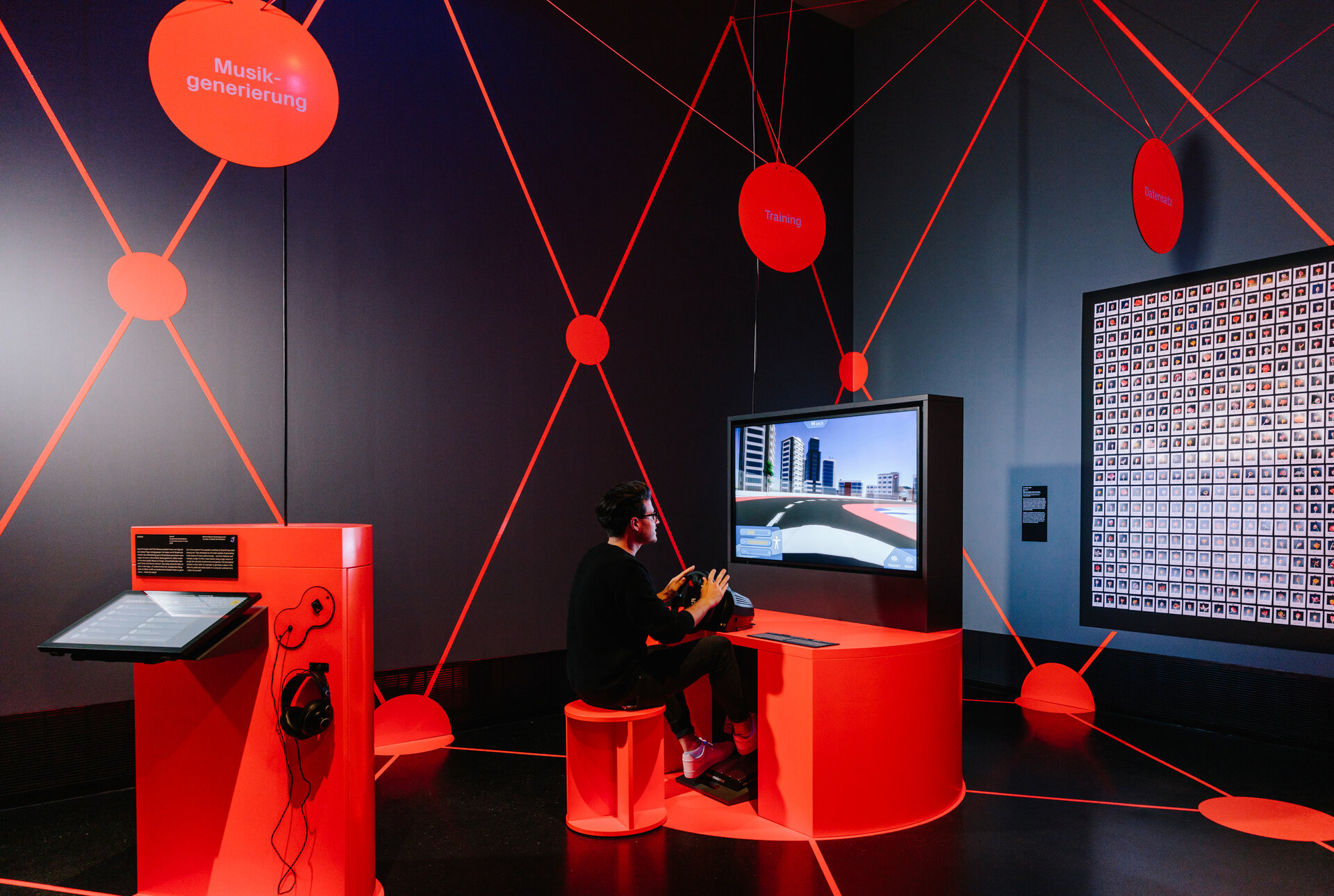
Artificial Intelligence
Artificial intelligence has long since arrived in our everyday lives. What seemed far away a few years ago is already normality today. Alexa and Siri reliably understand human speech, computers recognize faces and can name objects in pictures accurately.
All of this is based on major advances in AI research and implementation. But learning algorithms that adapt and respond to personal circumstances and needs are also behind applications such as Netflix’s recommendation system, vehicle navigation and personalized advertising.
AI and the Value of Data
But how does artificial intelligence actually work? First of all, what is essential to a well-functioning AI is a sensible selection of computational algorithms. But in order for AI to learn its behavior, it needs data as ”learning material.” The more realistic data an AI receives, the more intelligent its behavior becomes. We are demonstrating precisely this connection with an interactive installation at the Deutsche Hygiene-Museum in Dresden as part of the exhibition ”ARTIFICIAL INTELLIGENCE: Machine - Learning - Human Dreams.” In an interactive manner, the visitors can appreciate the importance and value of data in our modern world.
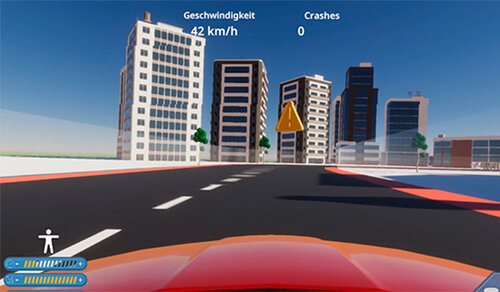
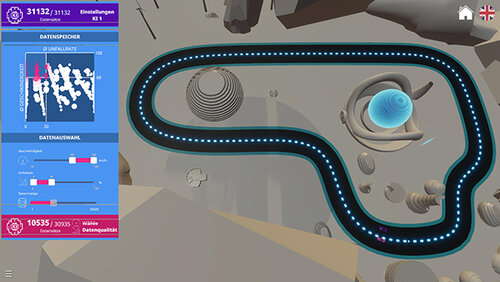
The Exhibit
At our driving simulator, visitors can first drive a car on a racetrack. In the process, control information such as steering and braking commands are stored together with measured values from the vehicle’s sensors. In a second step, this data is used as training material for an AI. The AI learns to steer the car itself based on this data. On a second racetrack, the car is then driven by the AI that has just been trained. The visitors are supposed to recognize their own driving behavior: If they drive slowly and safely, the AI has learned to drive slowly and safely as well. If the visitors tend to drive against the edge of the road, the AI adopts this behavior. If the car ride is very short, less data is generated. As a result, the AI can only learn poorly. Through this interaction with the AI, the visitors will understand: An AI only works as well as its training data.
At our exhibit, visitors can also experiment with the data of all previous drivers and select different data sets for training two AIs. The two AIs then compete against each other on a racetrack. The visitors can observe their driving behavior on a screen and realize that an AI cannot acquire a good driving style from bad data.
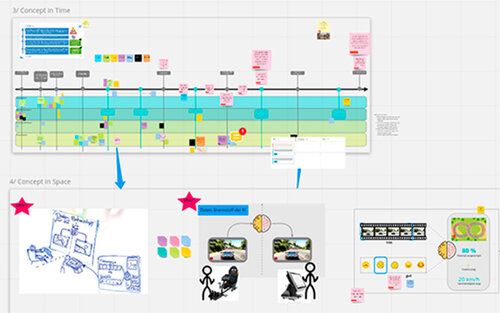
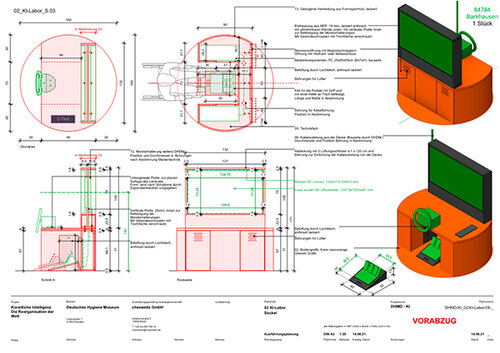
Development
With this installation, the BI’s Connected Robotics Lab wants to highlight the importance of the quantity and quality of data in the development process. The exhibit was created in cooperation with the Deutsche Hygiene-Museum Dresden and the agency Intolight. It was important to us not to merely explain the function of an AI to visitors, but to let them discover it on their own. Therefore, the users of our exhibit train the AIs themselves with different data. This works best when the data is generated directly by the users – and at the same time, this is how we achieve the greatest degree of interaction.
The choice of the ”autonomous driving“ scenario was based on existing preliminary work at the institute. The idea was followed by the implementation: Intolight supported us by developing the user story, the user interface (UI) and the furniture design. The production of the furniture and the specification of a frame design was done by the Deutsches Hygiene-Museum Dresden. The Barkhausen Institut took over the entire programming, validation with test visitors and realization of the UI design.
Implementation
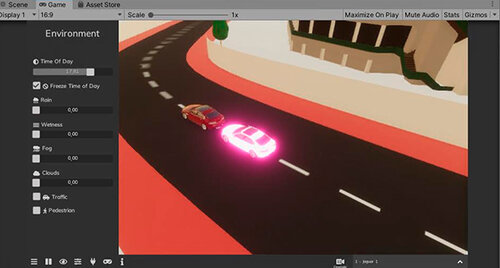
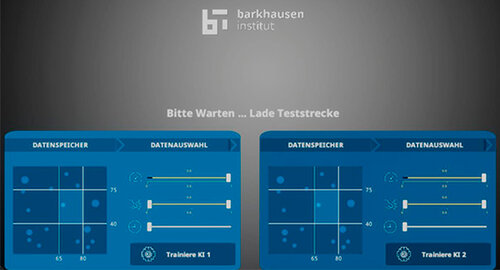
The implementation of an interactive exhibit in a museum bears some challenges. For example, the system must work completely independently during opening hours and, if possible, not require staff supervision. The level of reliability required for this is much higher than with our previous interactive installations (such as the Robotic Airhockey or the Connected Cars Demo), which made it more difficult to implement. In fact, the implementation went far beyond the development of a prototype, so we are very glad that the system is now working reliably day after day in the museum.
Due to time constraints, AI and design had to be developed in parallel. This presented us with the challenging task of creating the user journey and finalized user interfaces before we even knew if our idea would work or how the AI would behave. We had our design continuously reviewed by test users. The feedback we received led to constant changes in the user interface requirements, which we in turn had to take into account when programming the software. But ultimately, the coherent overall system was finalized just in time for the exhibition opening.
Outlook
Our installation will remain in the Deutsches Hygiene-Museum Dresden until the end of the special exhibition. After that, we will set up the driving simulator in the rooms of the BI and thus continue to make it accessible to visitors. The gained experience in implementation and design will be very useful for our further projects.
